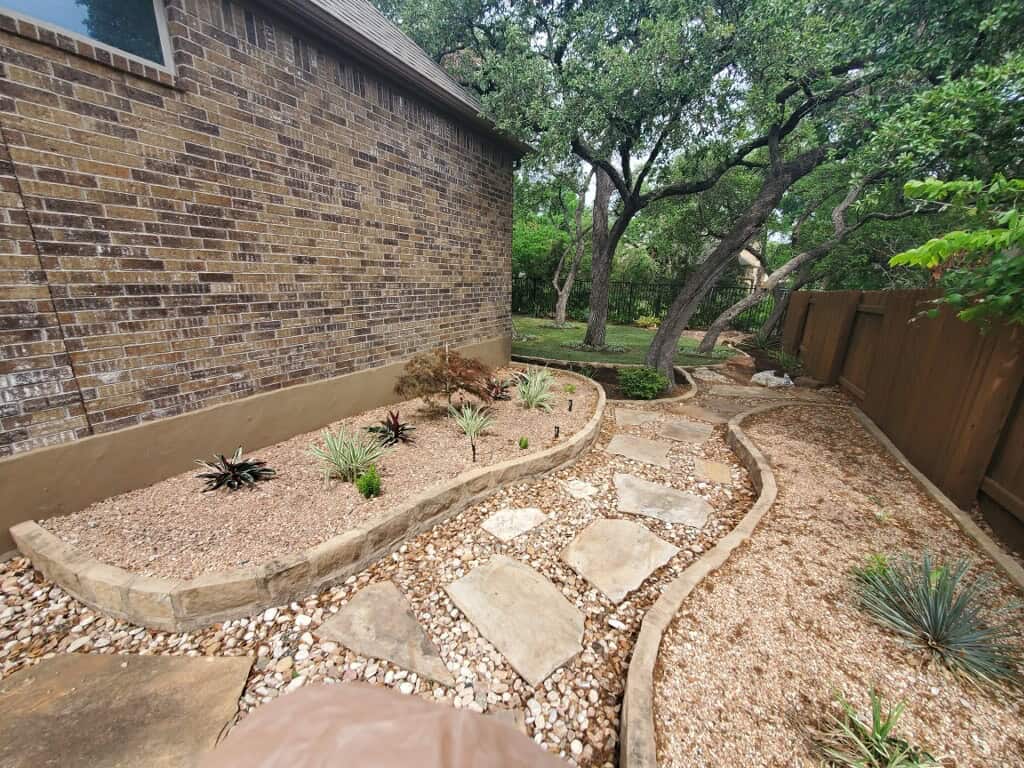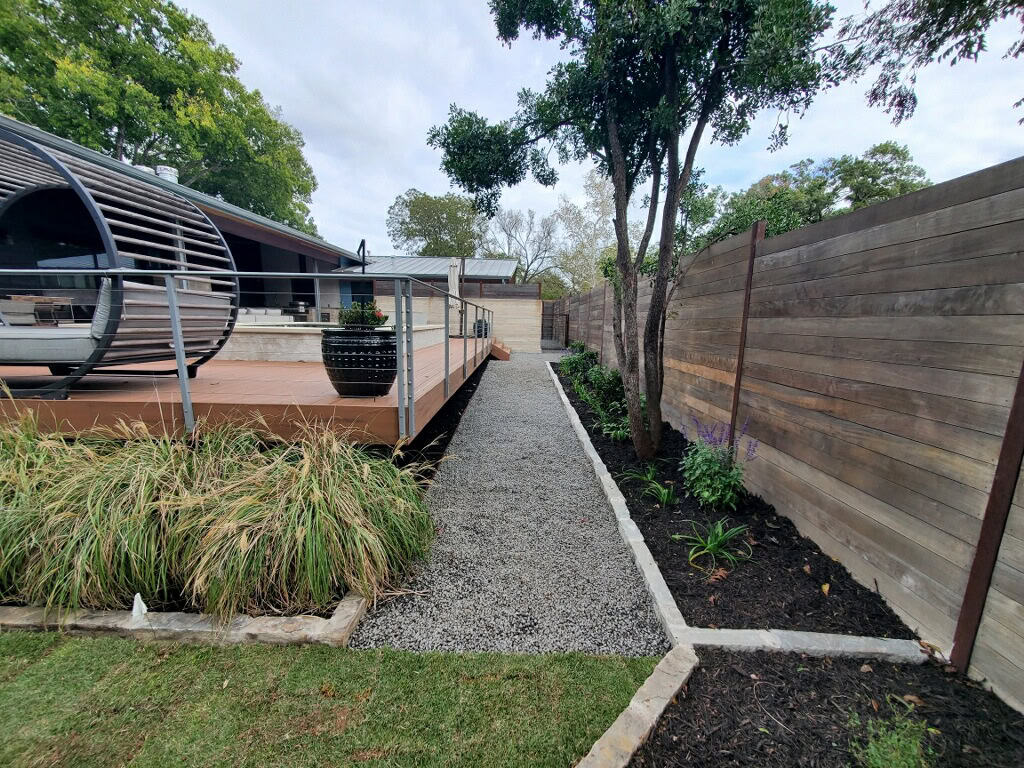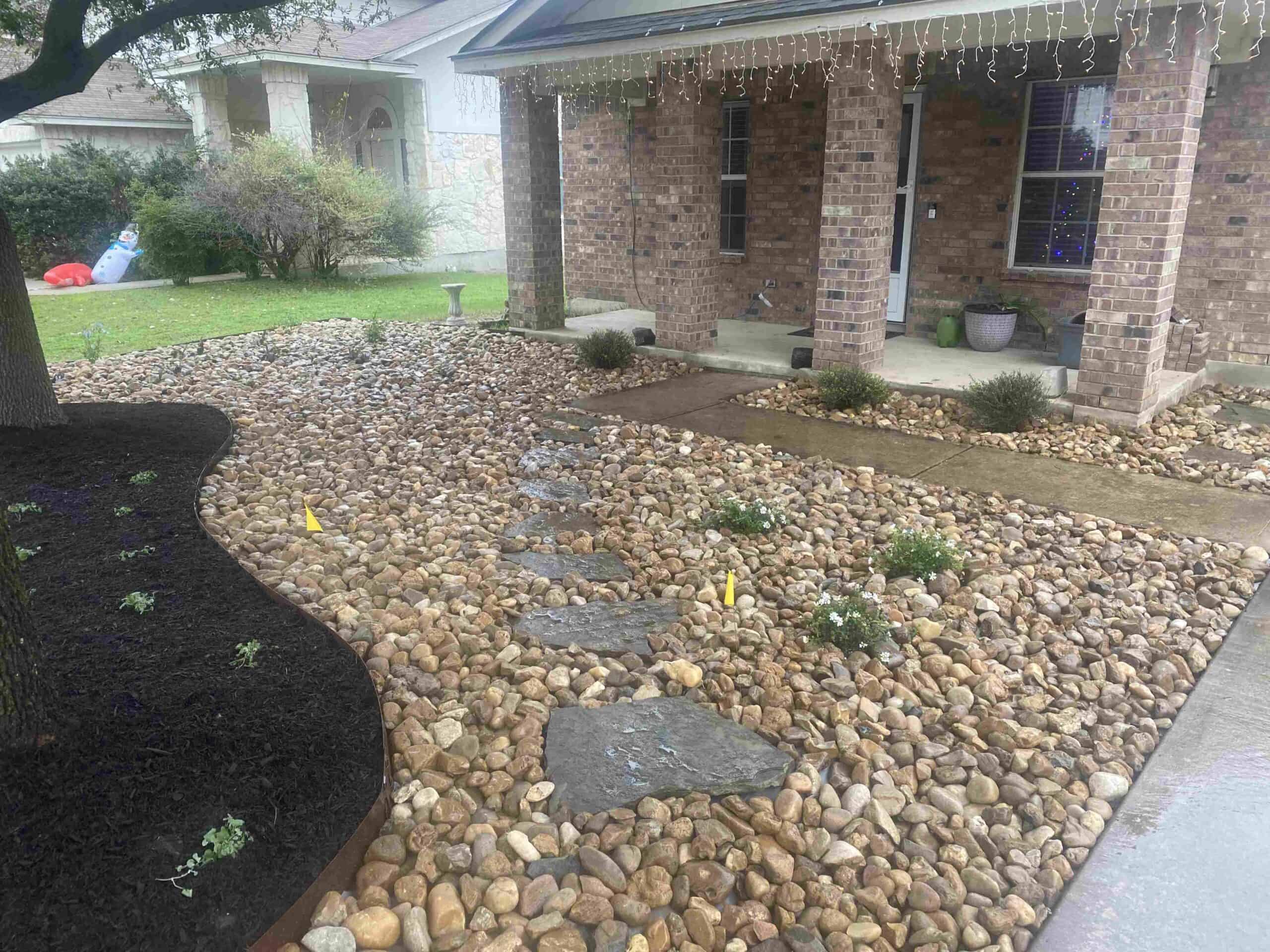Eco-Friendly Outdoor Living Spaces: Creating Sustainable Spaces for Relaxation & Entertainment
Since your goal with your outdoor living space is to make your property more functional and enjoyable, it’s important to do so on nature’s terms for optimal results. In order to do this, you want to ensure that your designs are as sustainable and eco-friendly as possible–and it’s easier to do than you think. Read on for eco-friendly materials and construction practices, energy efficiency techniques, and low-maintenance landscaping that enhances your outdoor space.
Sustainable Materials & Construction of Outdoor Living Spaces
There’s no shortage of sustainable materials and construction techniques you can use to create your outdoor living space. In fact, you’re likely more sustainable than you realize–but let’s break it down so you can plan your space as sustainably as possible.Recycled and Reclaimed Materials
Recycled plastics, reclaimed wood, and repurposed metals not only make your space more sustainable, but they make life easier for you. The more materials you can repurpose, the easier it is to build your outdoor living space without having to also worry about disposing of the features that were previously there. Recycled and reclaimed materials tend to be hardier than other materials. You’ll mostly use these materials for the hardscaping aspects of your outdoor living space, such as with furniture or permanent structures.Natural Building Materials
Natural building materials like bamboo, cork, and stone are not only sustainable and durable, but they’re also very in style. Homeowners everywhere are leaning towards the “natural look.” Plus, because their carbon footprint is lower, you’re not only promoting the health of your guests and residents, but you’re also saving money that you would’ve otherwise squandered on energy use. FACT: Decreased operating and material costs combined with decreased energy use makes natural building materials much more cost effective.Eco-Friendly Decking Options
In particular, there are lots of options for eco-friendly decking. Not only are these materials super durable, but they’re also vastly more cost effective than other decking materials. And many of them come with other unexpected benefits, such as a natural resistance to fungi and pests, class-A fire ratings, or susceptibility to stains, splits, scratches, mold, and mildew, depending on which material you choose. Here are six decking materials to consider:
Here are six decking materials to consider:
- Responsibly-sourced hardwood like ipe
- Real cedar
- Redwood
- Bamboo
- Composite decking
- Porcelain decking
Energy Efficiency Techniques for Outdoor Living Spaces
Energy efficiency is half the battle when it comes to building sustainable outdoor living spaces. But it’s easier to do than you think! The section below will provide tips on how to improve your water conservation and energy-efficient lighting practices.Water Conservation Techniques
There are three major ways you can conserve more water in your outdoor living space: planting drought-resistant plants, installing efficient irrigation systems, and using rainwater. When choosing drought-resistant plants, you want to ensure that they’re native to your area. Some drought-resistant plants fit for Austin, Texas are lavender, agave, and cape plumbago, to name a few. Irrigation systems are crucial for plant health, but you want to use sustainable ones. Drip irrigation or smart irrigation systems are great for water conservation. This is because they’re low-pressure, low-watering irrigation systems that target your plant’s roots. This way, your plants are only getting the exact amount of water they need–no less, no more. It’s also beneficial to put your rainwater to good use. Rainwater Harvesting is a method of collecting and storing rainwater for later use. You can use it for indoor water use or even to water your plants. If your area gets a decent amount of rain, installing a rainwater harvesting system may be beneficial for you.
Energy Efficient Lighting & Power
When it comes to energy efficient lighting and power, there are three main options to consider: LED bulbs, solar lighting, and renewable energy sources. Compared to traditional incandescent bulbs, LED bulbs last longer and conserve more energy. This is an easy and affordable swap to make to improve your outdoor living space’s sustainability. Solar lighting is more obviously energy conscious. Most people think solar panels are the only way to include solar energy in your outdoor living spaces, but there are other more affordable ways. You can get solar-powered string lights, path lights, and more online now. These are affordable little swaps that result in tons of energy conservation. When it comes to renewable energy sources, solar panels are a great addition to your property, but they’re not the only way. Small wind turbines are also a potential addition, and they work even better if you also have water features on your property, as the energy from rivers or streams help propel wind turbines without electricity use. You will have to consult building regulations for the use of a wind turbine though, so keep that in mind.Sustainable & Low Maintenance Landscaping for Outdoor Living Spaces
One of the great things about making your outdoor living space more sustainable is that it also tends to become lower maintenance. Here are some ways to make your landscaping lower maintenance and more sustainable without compromising its appearance.Xeriscaping
Xeriscaping is a style of landscaping that requires little or no irrigation. It takes some planning, but here are some strategies for achieving this: planting drought tolerant plants, mulching, using efficient irrigation methods, and replacing grass with drought tolerant grasses or gardens, hardscaping, or potted plants. All of these things are proven methods for water conservation.
